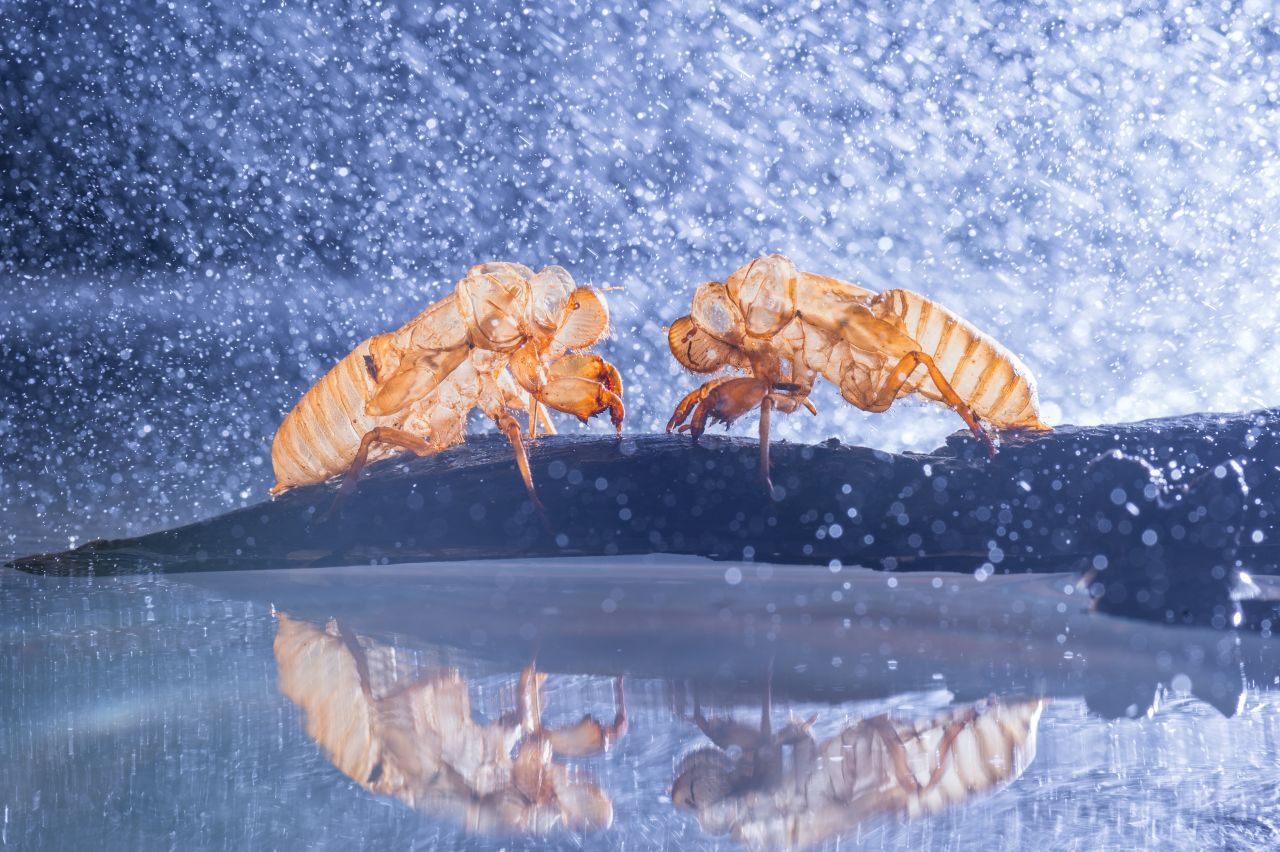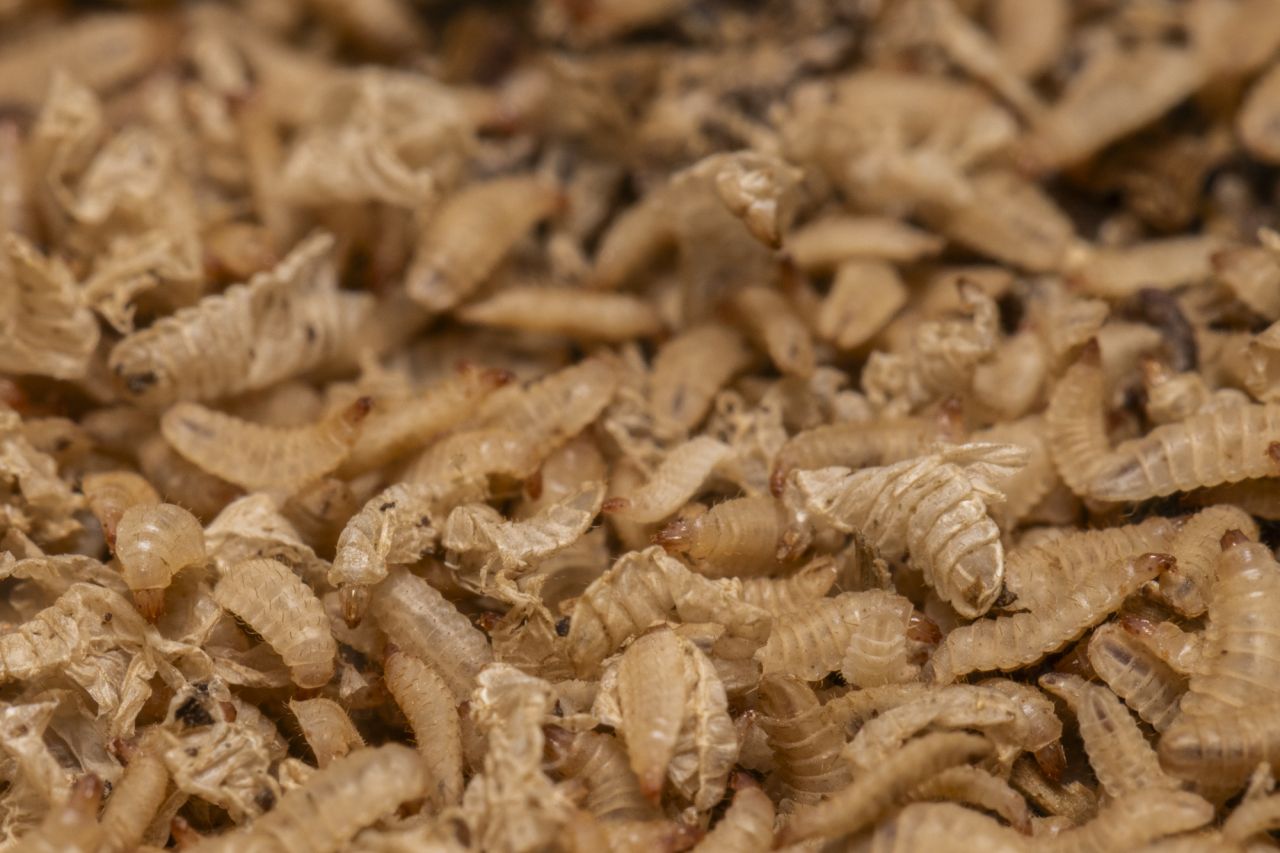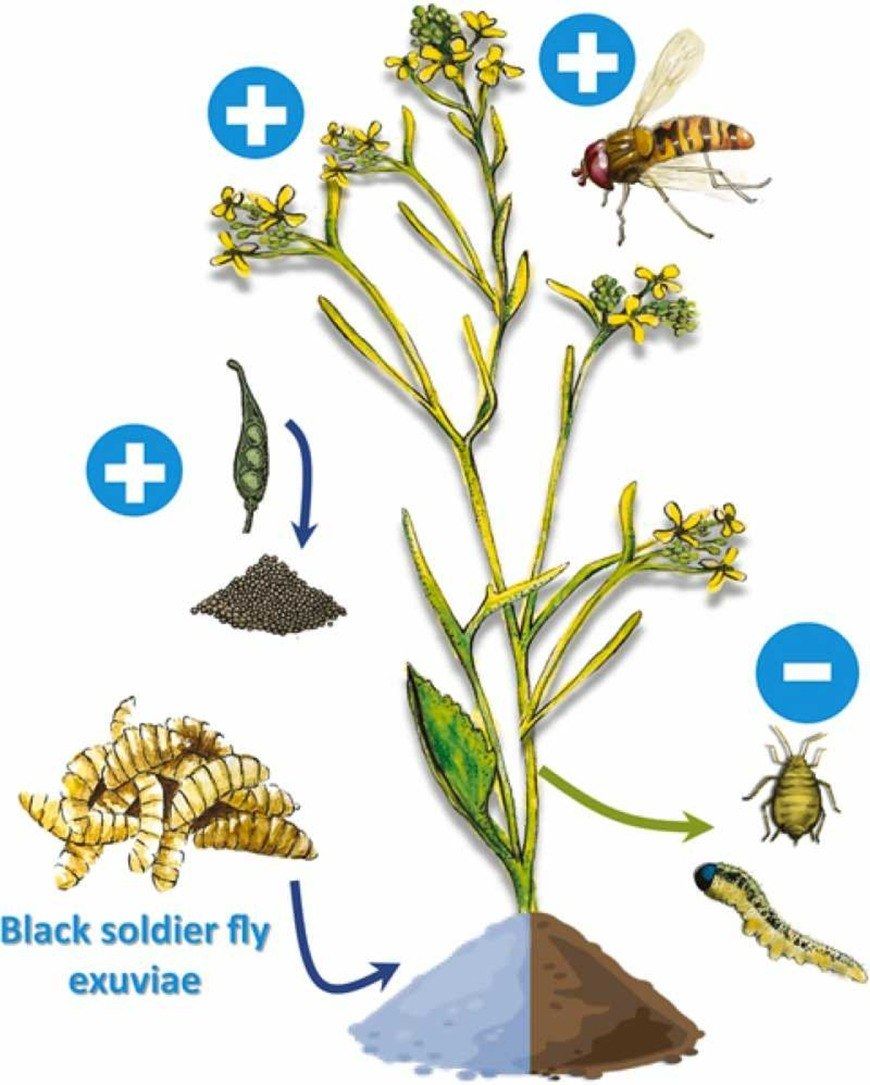Leftovers of insect production for sustainable crop production
Insect farming is on the rise as we uncover their potential across various industries. But raising insects at scale generates a lot of byproducts. Surprisingly, these leftovers aren't just waste—they could hold the key to solving some major agricultural challenges.

The exuviae of two cicadas are facing each other. Could this chitin-rich byproduct be useful for crop production? Image: Adobe Stock
Modern agriculture faces two significant challenges: the overuse of nitrogen-based fertilizers and of pesticides. While these tools aim to enhance plant growth and shield crops from herbivores, they come with serious health and environmental risks. To tackle these issues, scientists are exploring creative solutions—and surprisingly, insects might play a pivotal role.
As they grow, insects produce two intriguing byproducts: frass and exuvia. Frass, their excrement, and exuvia, the shed exoskeletons from molting, are often overlooked as mere waste. Yet, research reveals their hidden potential to support plant growth and health in remarkable ways.
Professor Marcel Dicke’s team from Wageningen University has explored this idea in depth. Their opinion article in the scientific journal Trends in Plant Science provides a comprehensive review of how insect-derived products influence various aspects of agriculture.
Bribing microbes with insect leftovers
The growing use of insects like yellow mealworm, house cricket, and black soldier fly in food and feed production is generating large amounts of farming byproducts. Among these, exuviae are rich in chitin, nitrogen, lipids, and proteins. While plants can’t directly utilize chitin, certain bacteria can break it down into nitrogen and other useful compounds. Adding exuvia to soil encourages these bacteria, indirectly promoting plant growth.

A collection of BSFL exuviae. Image: © Kaan Mika
Frass, another insect byproduct, consists of insect excrement, fragments of exoskeletons, and undigested feed. Studies have shown that frass enhances plant growth and supports beneficial bacteria and fungi in the soil. Together, exuviae and frass contribute to healthier, more fertile soil, offering a natural way to boost plant productivity.
Altered resistance
Insect excrements are signal cues for plants, and different plant species react differently to frass! For instance, caterpillar frass makes maize more resistant to aphids and pathogens, while rice becomes more resistant to caterpillars. Adding insect residues like frass and exuviae to soil triggers systemic resistance in plants, both above and below ground. Above ground, frass changes the substances plants release into the air, attracting parasitoids that target herbivores. Below ground, it strengthens roots, improving resistance to underground pests and pathogens. By stimulating plant growth-promoting rhizobacteria (PGPR) with insect residues, we can enhance plant defenses, reduce herbivore damage, and increase the recruitment of natural enemies.
Bacteria against fungi
As insect residues in the soil promote the growth of chitin-degrading bacteria, they also indirectly protect plants from fungal attacks. Studies have shown that adding chitin-rich materials to soil reduces the incidence of some root-infecting fungi species. These beneficial bacteria act as natural defenders producing enzymes that weaken and disrupt the fungal cell walls, boosting the plant’s resistance to fungal infections and promoting healthier growth. In addition to chitin breakdown, these bacteria also release compounds that protect plants from pests and diseases. For example, Bacillus subtilis produces antibacterial compounds that inhibit the growth of harmful bacteria and fungi in the soil, shielding plants from infections and pest damage.
More feces, more flowers
Adding frass and exuviae can help create a healthy microbiota, making plants more resistant to diseases and herbivore attacks. But the benefits don’t end there. The chitin-rich soil can also influence factors like flower number, size, duration, and even nectar production in some plant species. Since flowers are key attractants for pollinators, they play a vital role in plant reproduction. Finally, there is even evidence showing that insect residues in soil increase seed production in Brassica nigra plants.

The positive effects of using black soldier fly exuviae in soil: Increase in seed and flower number, more pollinator visits and less herbivore attacks. Image: Agriculture, Ecosystems & Environment, Licence
As the insect farming industry expands, the use of insect residues in animal feed is expected to grow, providing valuable byproducts that can be used as soil amendments. In the context of circular agriculture, rather than wasting these residues, we can use them to enhance soil health, making our lands more productive and efficient. This approach may reduce the need for pesticides and decrease the land area required for crop production, contributing to a more sustainable and resilient agricultural system.
Acknowledgement
We sincerely thank Professor Marcel Dicke for his invaluable feedback on the text.
References
Imbler S. 2022. Insect Trash Could Be a Farmer’s Treasure. New York Times. https://www.nytimes.com/2022/03/02/science/insect-poop-soil.html Accessed on 27.02.2025
Barragán-Fonseca KY et al. 2022. Insect frass and exuviae to promote plant growth and health. Trends in Plant Science 27;7:646–654. https://www.cell.com/trends/plant-science/fulltext/S1360-1385(22)00007-3
Barragán-Fonseca KY et al. 2023. Amending soil with insect exuviae improves herbivore tolerance, pollinator attraction and seed yield of Brassica nigra plants. Agriculture, Ecosystems & Environment 342. https://doi.org/10.1016/j.agee.2022.108219
